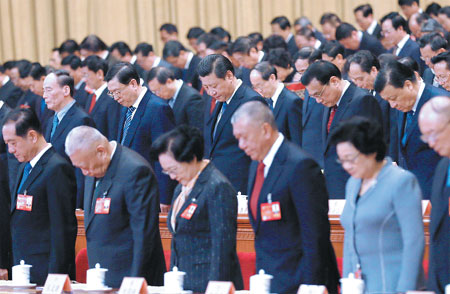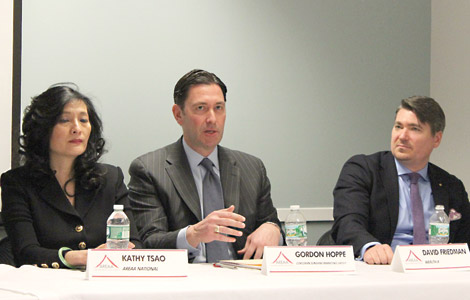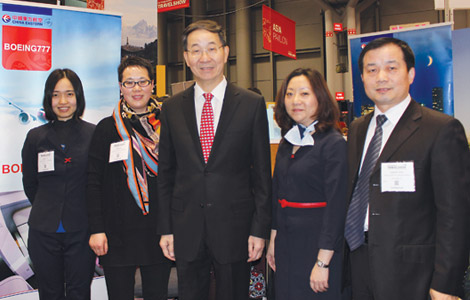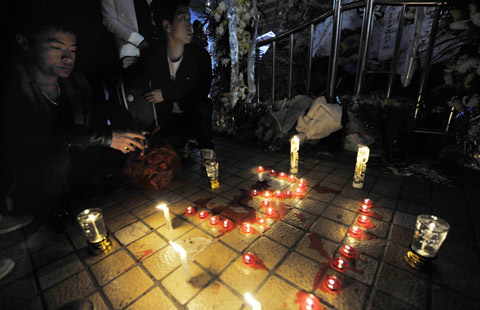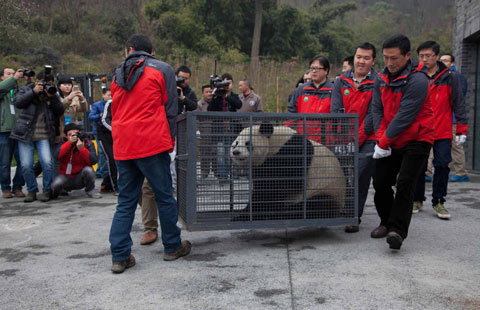Seven steps toward the China dream
Updated: 2014-03-05 09:04
(China Daily USA)
|
||||||||

China Daily outlines seven of the major policies introduced by the nation's leadership to build a better, fairer and cleaner China.
1. Anti-corruption
A total of 31 senior officials, some of them above ministerial level, were investigated for corruption last year, as the Party's sweeping anti-graft campaign went into top gear.
Those who have came under the spotlight included Li Chuncheng, former deputy Party chief of Sichuan province, and Jiang Jiemin, former head of the State-owned Assets Supervision and Administration Commission.
Huang Shuxian, deputy chief of the Communist Party of China Central Commission for Discipline Inspection, said at a news conference on Sunday that his department had received more than 1.9 million reports on corruption, 19.8 percent of which were filed online.

He said that anti-graft agencies nationwide had 11.2 percent more cases year-on-year in 2013 and had punished 13.3 percent more corrupt officials than in the past year.
All government income and spending records must be included in budget management, Premier Li Keqiang said at a key anti-graft meeting in February, stressing that there would be no letup in the drive to sweep out corruption this year.
"To forge iron, one's own self must be strong," Party chief Xi Jinping said after the First Plenum of 18th Central Committee of the CPC in 2012, calling on all Party members to instill in themselves a stricter sense of discipline. His words have become the principle of the following year of cracking down on corruption.
He also vowed to go after "flies" as well as "tigers," meaning that officials at all levels would have to take the campaign seriously.
2. Environmental protectiion
Since taking office, President Xi Jinping and Premier Li Keqiang have pledged many times to better protect the environment, reaffirming the importance of balancing economic development and environmental protection.
"Those who made rash decisions regardless of the ecological environment, resulting in serious consequences, must be brought to account, and should be held accountable for a lifetime," Xi said in May at a group study session attended by senior Party officials.
"Prevention should always come first ... Pollution prevention and control of water, air and soil should be stressed. Pollution control in key river basins and airborne pollution treatment in key areas and industries should be promoted."

The comment is seen by environmental experts as setting out a clear path that can help improve the environment in China and highlighting that all measures should be legally enforced, according to Meng Wei, head of the Chinese Research Academy of Environmental Sciences.
The central government's environmental strategy reached an important stage in September 2013 when the State Council issued the Airborne Pollution Prevention and Control Action Plan (2013-17), a tough move to improve poor air quality, with clear emission reduction targets accompanied by punishments for officials who fail to meet the targets.
To help realize the action plan, the latest moves include 22 policies hammered out by the Environmental Protection Ministry and other ministries to be carried out in the near future, 10 of which are economic-related.
The central government has also set up a special fund of 5 billion yuan ($813.5 million) in 2013, which is due to grow to 10 billion yuan this year, to reward efforts to curb air pollution in the key areas with the most frequent smog and haze.
3. Urbanization
During the Central Urbanization Work Conference at the end of 2013, President Xi Jinping said urbanization is where the greatest potential lies for expanding domestic demand and promoting industrial restructuring.
But this time, the central government is poised to put a more people-centered approach at the heart of its urbanization plan, setting out a reform timetable for the nation's household registration system by 2020, one based on regular places of residence rather than the much criticized current system based on a person's place of birth.
Gu Shengzu, a professor of economics at Wuhan University, said China's urbanization rate has reached 51.27 percent, but the proportion of registered urban residents accounted for only about 38 percent, which means that nearly 200 million people live in towns and cities where they cannot enjoy the same treatment as registered urbanites. Their identity and status remain indeterminate.

Narrowing the gap between urban and rural regions has become the focus of the urbanization program. The central government announced on Feb 7 its resolve to integrate the rural and urban pension insurance systems, in order to equalize access for both rural and urban residents.
One highlight is the transfer of rural residents to neighboring medium or small-sized towns, instead of a huge migrant influx to major metropolitan areas such as Beijing and Shanghai. Promoting this new type of urbanization depends on making a breakthrough in county-level economic development.
Yao Shujie, a professor of economics at the University of Nottingham in the United Kingdom, said China's urbanization will embark on a more balanced development path when there is a stable flow of rural residents to nearby small cities and towns.
This will also help reduce the population pressure in big cities, so that skyrocketing housing prices are likely to be curbed.
4. Work style reform
Di Zhenguo, a farmer in his late 70s in Longju, deep in the mountains of Hebei province, had long planned to get each of his children issued with their own hukuo, meaning that the households of each of his offspring would be independently registered.
But his plans were thwarted by his poor health, the distance he would have to travel, and the complicated and lengthy bureaucractic procedures that would be required when he got there.
That was the case until November, when Hebei province made sweeping reforms to its administrative approval processes.
The elderly farmer, who had previously feared that he would die before completing his plan, handed all the documents to officials who came to his home, and he received official approval for his plans on the very next day.

This is just one of a series of measures introduced in Hebei province since the Communist Party of China Central Committee launched the "Mass Line" campaign in April, which calls for an improvement in relations between the Party and the people.
President Xi Jinping said on June 18 that formalism, bureaucratism, hedonism and extravagance, which are known as the "four undesirable work styles" will undermine Party-people relations.
The top priority of the yearlong "Mass Line" campaign is to establish a new working style and undertake a "thorough cleanup" among officials at or above county level.
To further strengthen the rules and make the campaign more effective, the CPC Central Committee also launched a series of strict rules to prevent the abuse of public funds and regulate government management and officials' behavior.
The rules state that all the levels of government organs are prohibited from building new buildings within the next five years, while also curbing extravagance and the use of public money to satisfy personal interests.
5. Economic reform
China launched a 4 trillion yuan ($586 billion) economic stimulus package in late 2008 to offset the impact of the US subprime mortgage crisis.
However, relying on such investment-driven growth has resulted in the side effects of local government debt, currency mismatch and a real estate price bubble.
Faced with the continuous downturn in the real economy last year, President Xi Jinping recognized that relying on traditional economic stimulus cannot resolve the structural contradictions and may exacerbate production overcapacity. Xi resolved that the key to steady growth lies in deepening reform and structural adjustment.
Li Xuesong, deputy director of the Institute of Quantitative and Technical Economics at the Chinese Academy of Social Sciences, said China's macro-control should be placed on steady growth and that fiscal and financial reform should be prioritized to further reduce corporate tax, while reducing corporate financing costs.
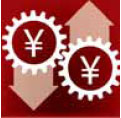
The establishment of the Shanghai Free Trade Zone in September is the new government's economic reform blueprint in miniature. Implementation of the "negative list" management approval system will provide more transparency and wider opening to companies. The system only stipulates restrictions, so that companies in the zone can have more say over their operations.
The financial pilot covers cross-border and third-party payment services and management of foreign exchange, which is likely to promote the long-term internationalization of the renminbi.
The central bank announced in July that it would remove all restrictions on loan rates, and introduce a primary loan rate, opening a new chapter in rate liberalization.
Yifan Hu, chief economist at Haitong International in Hong Kong, said liberalization of interest rates is expected to raise the efficiency of the banking sector in China through the introduction of a market-oriented pricing mechanism of funding, and to further accelerate the opening-up of the financial sector by promoting more prudent and innovative risk management strategies.
Fiscal reform was also the government's key task last year. Coupled with a proactive fiscal policy and prudent monetary policy, fiscal measures were undertaken to complete a structural tax reduction policy, so that outstanding industries will obtain more supporting funds.
6. Abolition of LAOJIAO
One of the most hailed moves of China's reform package, both at home and abroad, is the abolition of the controversial "re-education through labor" policy, known as laojiao in Chinese. It was included in the long list of reforms unveiled by the Third Plenum of the 18th Central Committee of the Communist Party of China on Nov 15.
Formally established by a central government administrative regulation in 1957, laojiao is a special measure of administrative, rather than criminal, detention. Its purported aim is to punish those who commit offenses not serious enough to require criminal punishment.

Laojiao has undergone significant changes over the years. The earlier lists of targets included politically unreliable individuals. Later, the spectrum of laojiao was expanded to tackle a number of social evils, such as drug addiction, prostitution and gambling. Most recently, so-called illegal petitioning was added to its list of offenses.
"The abolition of laojiao is a triumph for Chinese legal practitioners, and most significantly the Party has shown a genuine interest in acting on people's will, in rectifying social injustice and improving the rule of law," said Zhou Yongkun, a law professor at Soochow University in Jiangsu province and one of the most vociferous critics of the laojiao system.
7. One-child policy changed
China's top policymakers decided to relax the decades-long one-child policy at the Third Plenum of the 18th Central Committee of the Communist Party of China in November.
Couples are allowed to have two children if one of the parents is an only child, based on which provincial legislatures can make their own rules.
For instance, Beijing requires women to be over 28 or the second child should be born at least four years later than the first one, while Shanghai does not have such requirements.
Family planning was written into the Chinese Constitution in 1982 as an essential State strategy to prevent excessive population growth.

The government estimates that had the one-child policy not been introduced in the late 1970s, the Chinese population today would be around 400 million higher than its current level. In 2012, China's working population started to decline by 3.45 million annually, and after 2023, the working population is likely to fall by 8 million each year, according to the government.
The birth rate is relatively low and was showing signs of falling further. On average, since the 1990s, Chinese women of childbearing age give birth on average to 1.5 to 1.6 children.
In 2013, China had an aged population - people aged 60 and above - of 200 million, and in early 2030s, the aged population will reach 400 million, accounting for one-fourth of the total population.
"Now, the policy is only for qualified couples because China still has a large population. We can't handle too rapid population growth and too large a population now. It is not the time for all the couples to have two children. Pressure on our environment would be too heavy," said Zhai Zhenwu, an expert with the National Health and Family Planning Commission.

(China Daily USA 03/05/2014 page6)
Most Viewed
Economy on path of steady growth[1]|chinadaily.com.cn
Gay sex poses HIV threat for youth|Society|chinadaily.com.cn
Japan to release videos of Chinese activists|Asia-Pacific|chinadaily.com.cn
Gay sex blamed for rise in young students with HIV/AIDS|Society|chinadaily.com.cn
More young adults living with parents|Americas|chinadaily.com.cn
Magazine seeks Guangzhou expat families to tour Fujian[1]|chinadaily.com.cn
World's longest sightseeing escalator awaits you in Central China[4]|chinadaily.com.cn
Dai Ethnic Group[1]|chinadaily.com.cn
Minmetals unit offers sponge city solutions for rainfall usage|Business|chinadaily.com.cn
Licenses revoked in anti-porn campaign|Society|chinadaily.com.cn
Editor's Picks

|

|

|

|

|

|
Today's Top News
Michelle Obama, kids will visit China
China embraces market forces
Sino-Germany electronic trade surges
The bitter truth about too much sugar
US: Train depot attack 'terrorism'
US halts military engagements with Russia
First Lady to visit China in March
Terrorists in Kunming attack busted
US Weekly

|

|
